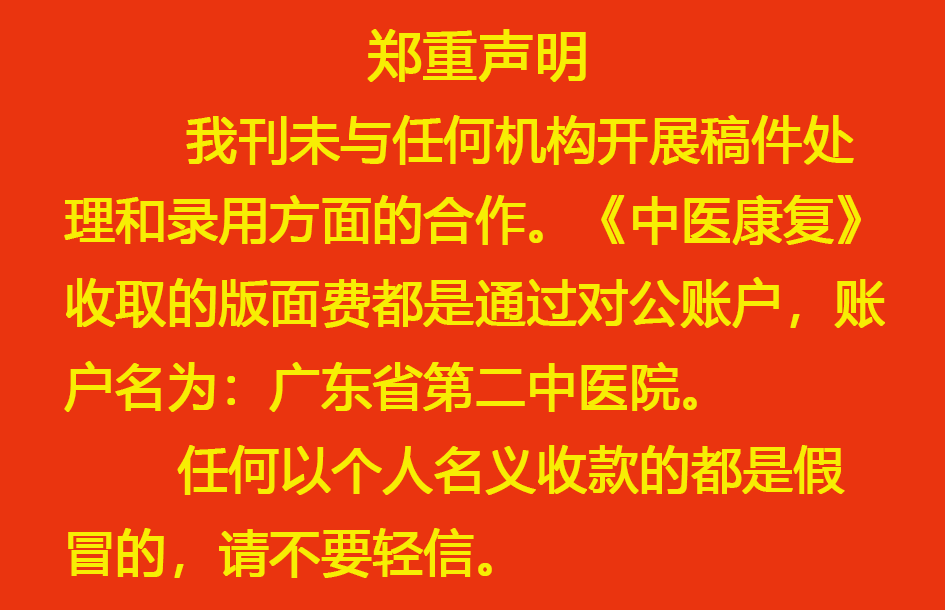| 摘要: |
| 目的:分析上海社区脊髓损伤者的康复需求状况及其影响因素。方法:研究对象是在上海阳光康复中心参加康复训 练的上海常住脊髓损伤者。采用前期研制的社区康复需求评估表、社区融入问卷、自评焦虑及抑郁量表和自拟调查表收集数 据。应用描述性统计、信效度分析和多元 logistic回归进行统计分析。结果:280名社区脊髓损伤者纳入研究,其中 65名参加 复测研究。评估表内部一致性、复测信度、内容和结构效度都良好。探索性因子分析发现,15个评估条目分属于4个需求维 度:教育/工作、社会、赋能和健康 。 总体社区康复需求程度为 64.6%,低于 60% 的是教育/工作需求(55.3%)和社会需求 (58.4%),其中需求比例在 50%以下的 7个需求条目是文化艺术活动(34.7%)、心理疏导(35.0%)、非正规教育(35.3%)、提升学 历水平(41.9%)、体育活动(43.6%)、就业创业(43.7%)和娱乐休闲活动(48.6%)。 多因素分析发现:高中及以下学历(OR= 2.20)、户籍地外省市患者(OR=2.06)有心理疏导需求的可能性高;2018-2019 年训练患者(OR=3.21)、大专及以上学历(OR= 2.31)和患者中的社区康复指导员(OR=2. 10)对非正规教育的需求比例更大;未婚/离异/丧偶(OR=2.24)、有工作/学生患者(OR =2. 12)对提升学历水平需求更大;户籍地外省市患者(OR=2.72)、50岁以下(OR=2.84)和月收入低于 6000元的患者(OR=3.63) 对就业创业需求更大;社区康复指导员(OR=4.73和 2.99)和女性(OR=1.83和 2.49)患者更需要文化艺术和体育活动,受伤 10 年以上患者(OR=1.72)更需要文化艺术活动,完全损伤患者更需要体育活动(OR=1.90)。 结论:上海社区脊髓损伤者的社区康 复需求水平中等,其中赋能和健康需求较高,教育/工作和社会需求偏低。 |
| 关键词: 脊髓损伤 社区康复需求 信效度分析 影响因素 上海 |
| DOI:10. 19787/j.issn.2097-3128.2024.01.003 |
| 投稿时间:2023-06-27修订日期:2023-07-12 |
| 基金项目:国家自然科学基金(NO.71673052);上海市残疾人联合会康复政策研究专项项目(NO.2022ZC1011) |
|
| Rehabilitation Needs and the Associated Factors of Individuals with Spinal Cord Injury in Shanghai |
| ZHOU Jun-an1, XIE Hai-xia2, LI Nan2, WANG Hui-fang2, WANG Xin-yu2, LIN Pei-pei2, CHANG Feng-shui1△ |
| (1. School of Public Health, Fudan University, Shanghai 200032; 2. Yangzhi Rehabilitation Hospital, Tongji University, Shanghai 201619) |
| Abstract: |
| bjective: To analyze the rehabilitation needs and the associated factors of individuals with spinal cord injury (SCI) in Shanghai. Methods: The participants were individuals with SCI from permanent Shanghai families who participated in rehabilitation training at Shanghai Sunshine Rehabilitation Center. The evaluation table of communitybased rehabilitation demand of individuals with SCI developed by our research team, Community Integration Questionnaire (CIQ), EQ-VAS, Zung self-rating anxiety/depression Scale (SAS/SDS) and a self-designed questionnaire were used. Descriptive statistics, reliability and validity analysis, and multiple logistic regression were employed in statistical analysis. Results: A total of 280 individuals with SCI were included in the study, of which 65 participated in the testretest study. The evaluation table of community-based rehabilitation demand showed good internal consistency, test-retest reliability, and content and structural validity. Exploratory Factor Analysis revealed that the 15 assessment items could be categorized into four need dimensions: education/employment, social, empowerment and health. The overall level of community rehabilitation needs was 64.6%, with education/employment needs (55.3%) and social needs (58.4%) scoring lower than 60%. The percentages of the seven need items were lower than 50%: cultural and artistic activities (34.7%), psychological counselling (35.0%), informal education (35.3%), formal school education (41.9%), sports activities (43.6%), employment and entrepreneurship (43.7%), and entertainment and leisure activities (48.6%). The multivariate analysis found that individuals with high school or lower education level (OR=2.20) and those from other provinces/cities (OR=2.06) had higher possibilities to demand psychological counselling compared to those with a higher education background and Shanghai Hukou residents. The participants who had been enrolled in 2018-2019 (OR=3.21), had a college degree or above (OR=2.31), and acted as community rehabilitation instructors (OR=2. 10) were associated with higher proportions of informal education needs compared to those who had been enrolled in 2020, had a high school education background or below, and were normal individuals with SCI. Unmarried/divorced/widowed participants (OR=2.24) and those who were employed/students (OR=2. 12) were more inclined to pursue formal education compared to the married or unemployed participants. The participants who were from other provinces/cities (OR=2.72), those aged under 50 years (OR=2.84), and with a monthly income below 6000 yuan (OR=3.63) had a higher possibility to demand employment and entrepreneurship compared to participants with Shanghai Hukou, those aged over 50 years, and those with a monthly income above 6000 yuan. Community rehabilitation instructors (OR=4.73 and 2.99) and females (OR=1.83 and 2.49) had greater needs for cultural and artistic activities, and sports activities compared to normal individuals with SCI and the males, respectively. The participants with more than 10 years of injury history (OR=1.72) had a higher percentage of cultural and artistic activities needs, while the participants with complete injury had a high possibility of needing sports activities compared to those with incomplete injury (OR= 1.90). Conclusion: The community rehabilitation needs of individuals with SCI from permanent Shanghai families were at a medium level, with empowerment and health needs being at a high level, and education/employment and social needs being at a relatively low level. |
| Key words: Spinal cord injury, community rehabilitation needs, reliability and validity analysis, associated factors, Shanghai |
